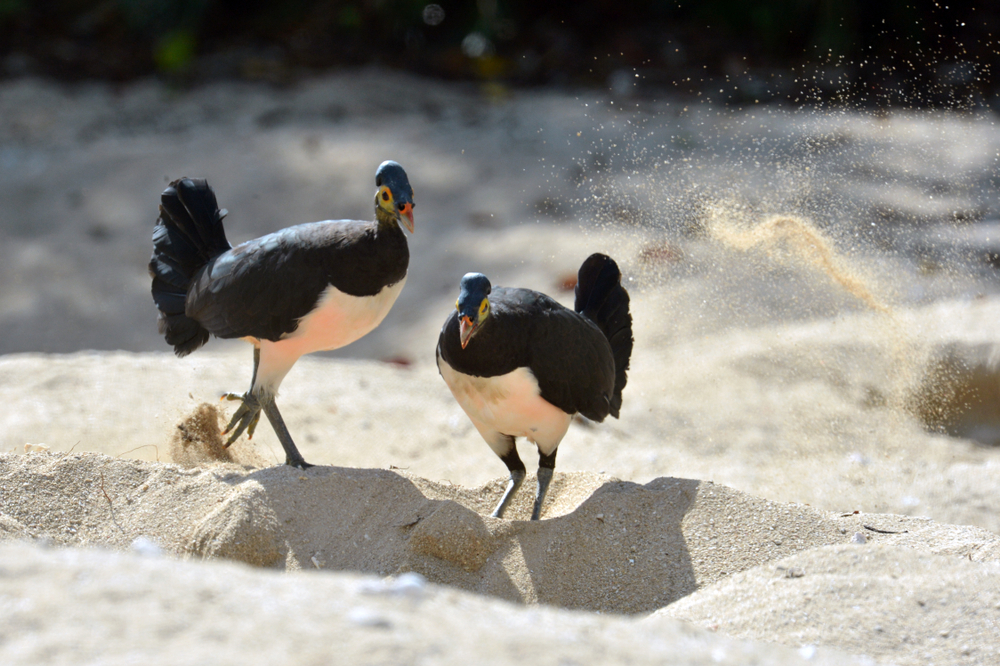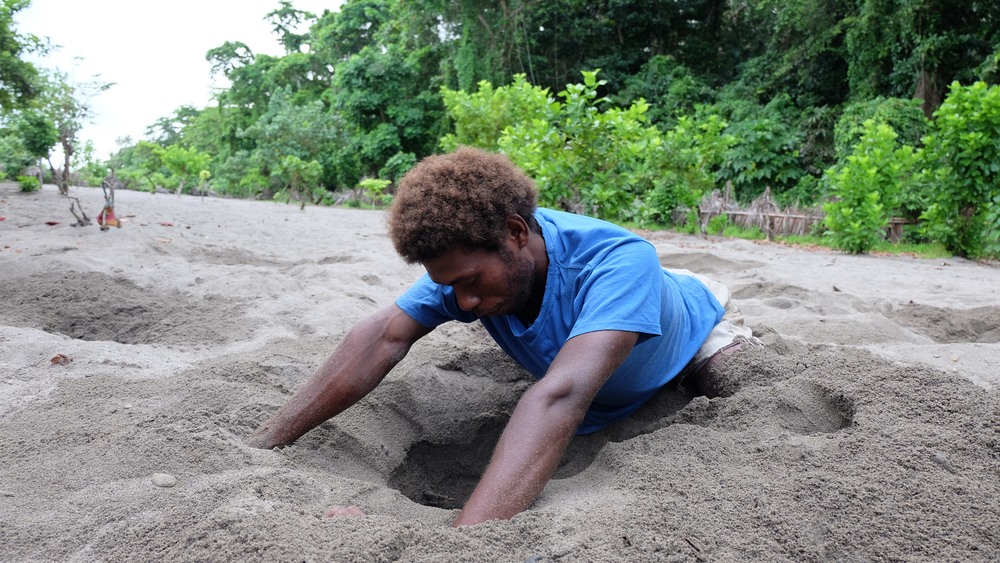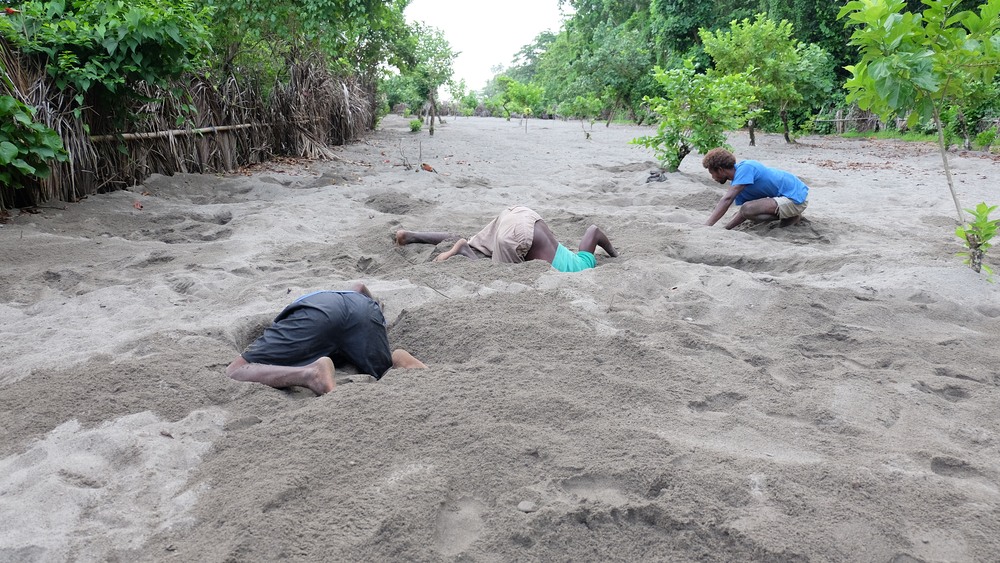Most birds incubate their eggs with body heat, but not megapodes, a chicken-sized bird with heavy body, short rounded wings and large, strong, four-toed feet. Birds in this family bury their eggs in soil and incubate them using natural heat sources. Depending on the species and its location, megapodes may lay their eggs in burrows dug in sun-warmed beaches, or geothermally active areas, or they may build large incubation mounds and fill them with organic matter such as leaves, and derive heat through their decomposition.

Photo credit: Riza Marlon/Shutterstock.com
The nest is usually built by the males, and he is responsible for making sure the eggs are adequately warmed. The female essentially walks away after laying eggs. The male stays behind adding or removing litter covering the eggs to adjust the temperature. Megapode hatchlings are super precocious. They hatch fully feathered and already able to fly. They dig themselves out of their burrows and within hours of birth start foraging their own food. The megapodes do not take care of their kids or feed them. This is very unusual among birds.
There are twenty two species in the megapode family, which are distributed across the Pacific and Indian ocean in the islands of Indonesia, Australia, New Guinea, Polynesia and the Andaman and Nicobar Islands in the Bay of Bengal. Megapode eggs are a delicacy among the inhabitants of these islands. The eggs are about fifty percent larger than a chicken egg and have a thin shell and a big yolk. In islands such as Matupi in Papua New Guinea, and Savo and Simbo in Solomon Islands, megapode eggs serves as a major part of their diet and a source of income.
In Savo islands in the South Pacific, there are large “egg fields” where megapodes bury their eggs, sometimes up to three or four feet deep. The island is volcanic and there are many hot springs and hot mud lakes here. The soil is naturally warm.

Photo credit: SIBC
The birds come down at dawn or at night to lay the eggs. In the morning villagers come down to the fields and start digging for the eggs with a flat piece of wood. But once they have made a hole about 18 inches deep, the wooden spade is discarded. The men then lie on their bellies and dig with their bare hands so they can’t accidentally break the eggs.
There was a time when Savo had a seemingly inexhaustible supply of eggs. But overharvesting has dramatically reduced the number of birds on the island and the supply of eggs. Many megapode colonies have altogether disappeared in a number of island groups such as Fiji, Tonga, and New Caledonia.

Photo credit: SIBC

Photo credit: SIBC

Photo credit: SIBC



Comments
Post a Comment